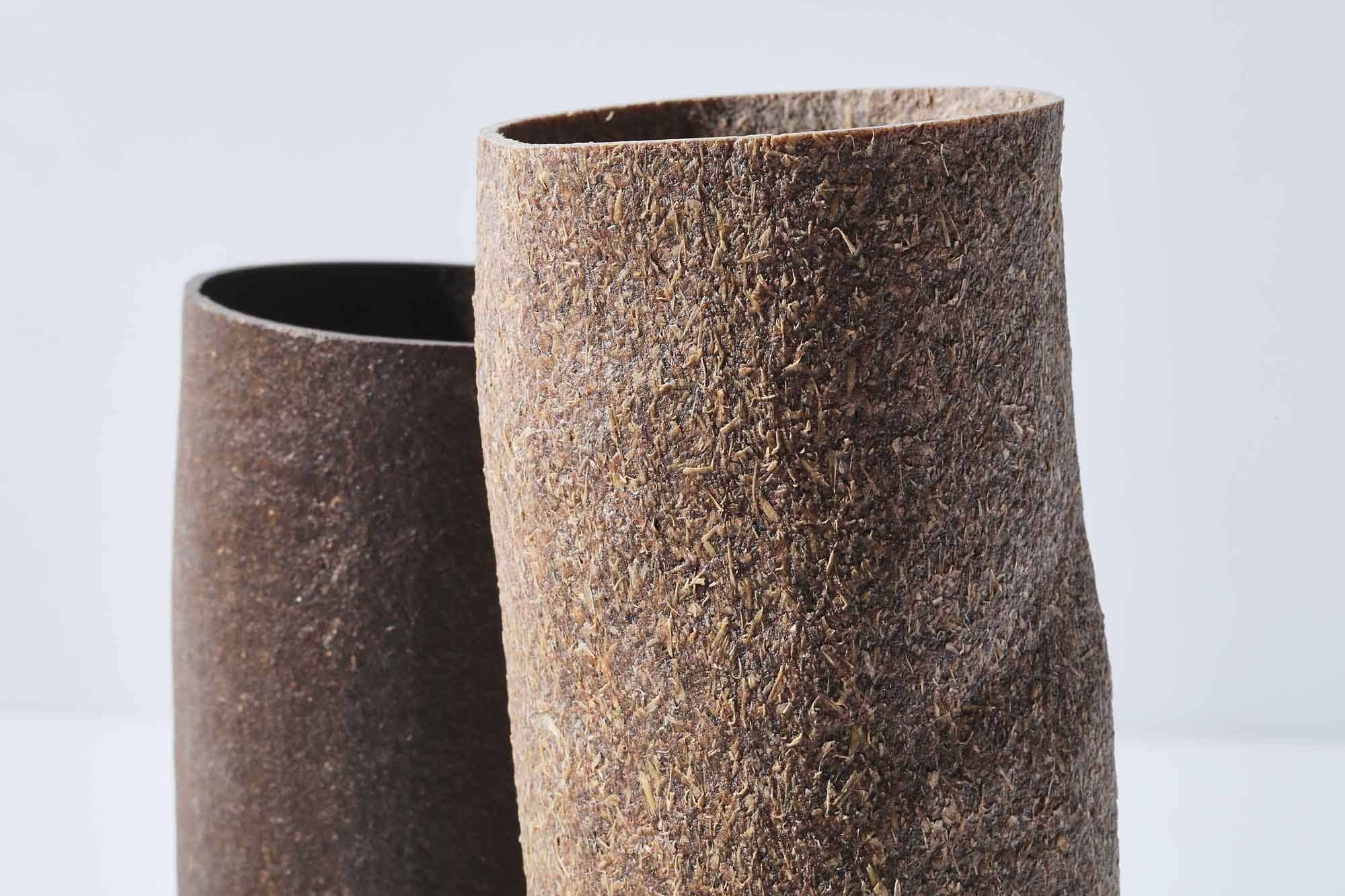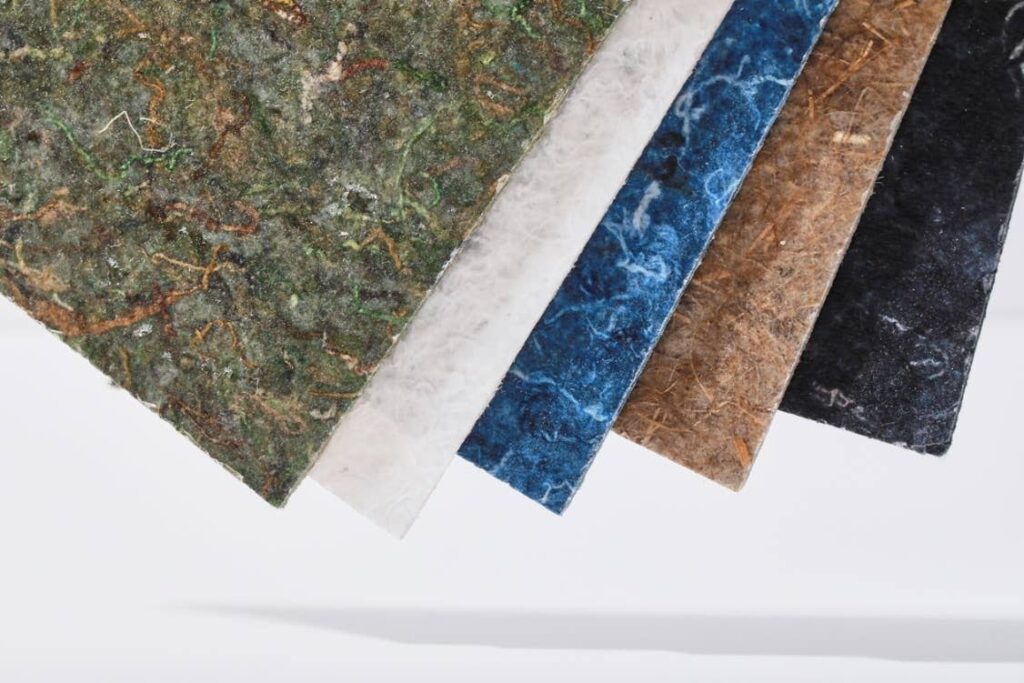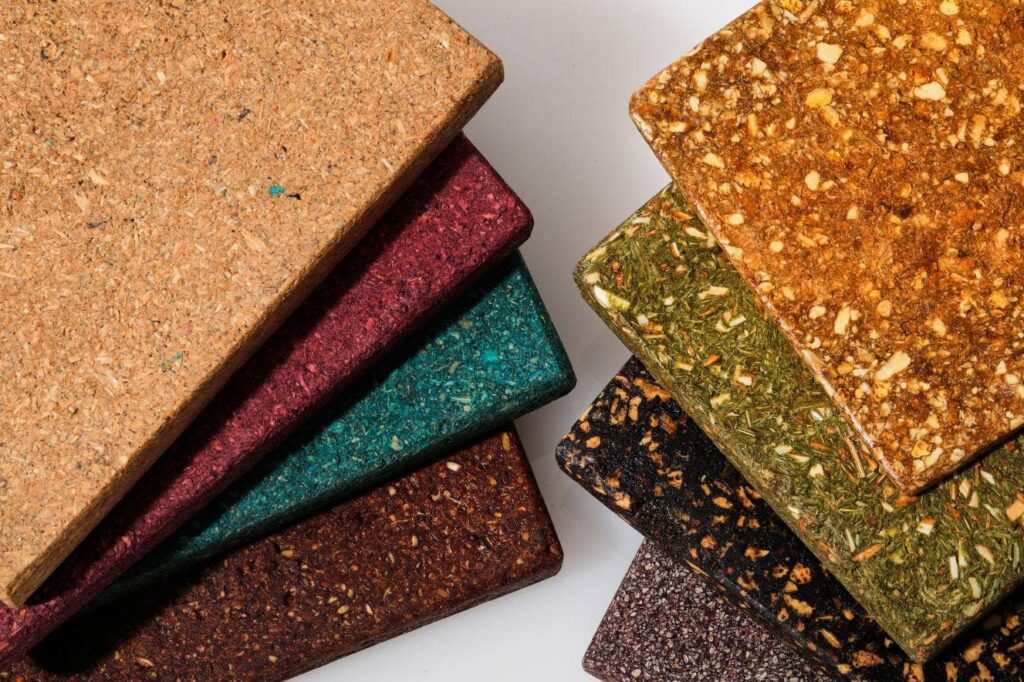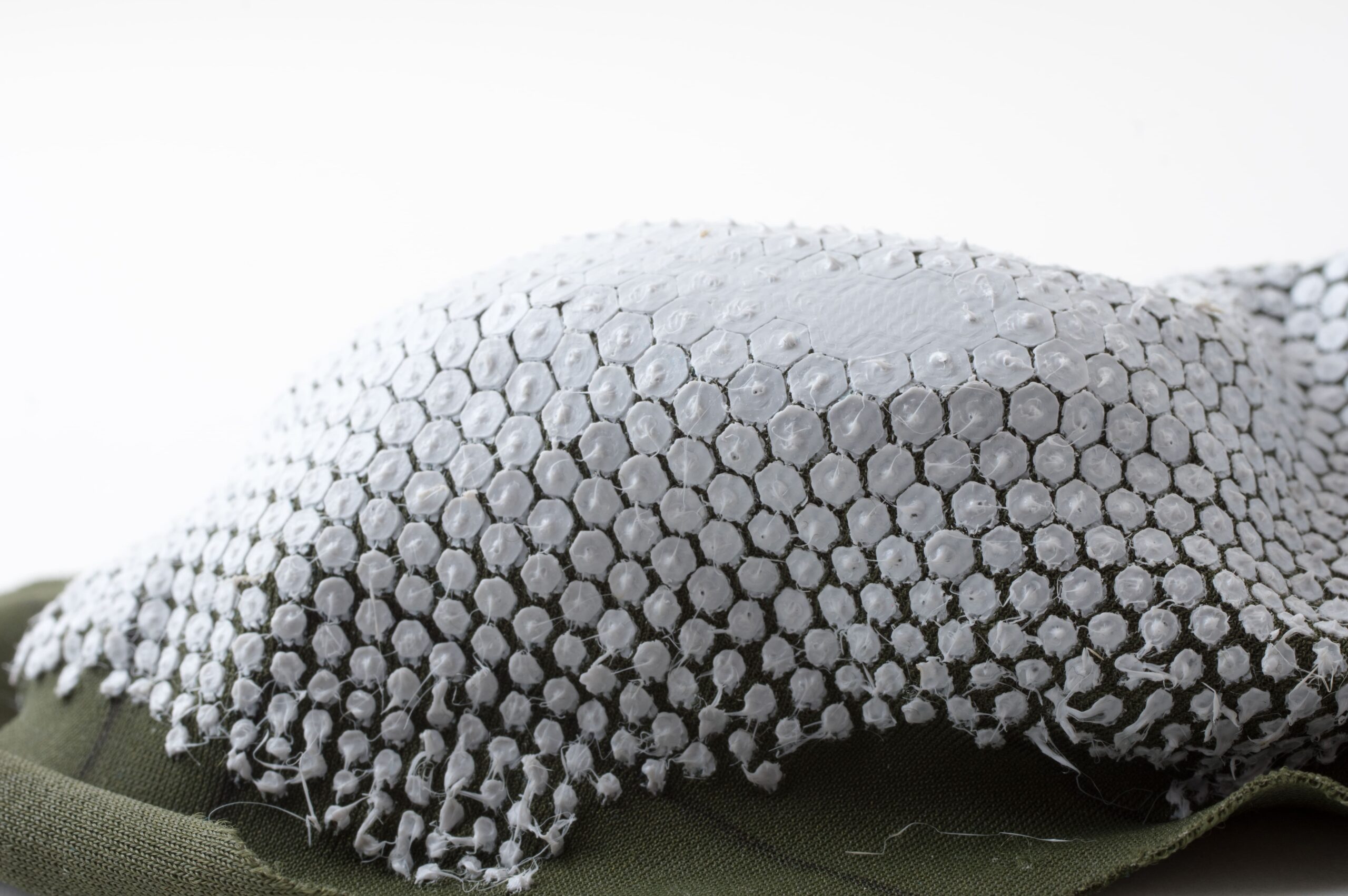
Matter reborn: three examples of circular economy in design
In recent years, there has been growing interest in the circular economy, which has become a key pillar of sustainable design. This approach promotes strategies aimed at extending the life cycle of materials through design that prioritizes durability, repairability, and recyclability from the earliest stages of product development.
Practices such as reuse and recycling are central principles around which to build new designs and spaces that seamlessly combine innovation with environmental responsibility.
The Materially Advisory team, dedicated to supporting companies in their search for innovative and sustainable materials, has selected three proposals from the Material ConneXion database that fully embody these values, transforming waste into new resources.

Sustainable panels made from recycled textile fibres and biobased binders
These thin, sustainable panels, made from textile waste and bio-based resources, are a tangible example of circular design applied to interior design. The material consists of 50% recycled fabrics and 50% bio-based binders, offering a responsible alternative to traditional materials.
The production process involves shredding discarded textiles — such as denim, linen, and hemp — into fibres, which are then transformed into felt sheets. These are pressed at high temperatures together with a natural binder derived from potato or corn starch. The result is a versatile panel that can be moulded into preformed shapes or cut into flat sheets for a wide range of applications.
The company also offers a high level of customisation, allowing for the inclusion of various fibre types or even textile waste provided by the customer. Each material is accompanied by a Digital Passport and Circular IQ certification, ensuring full traceability and transparency throughout its lifecycle.
Possible applications include worktop surfaces, shelves, wall coverings, and bespoke interior design projects.

Lampshades made from beer and coffee grounds
This collection of lampshades is another outstanding example of how circular economy principles can be applied to the world of interior design. Each piece is crafted using by-products from beer and coffee production, with the aim of reducing environmental impact and giving new life to waste materials.
The silver skins of coffee beans, combined with hop and barley residues from breweries, are first dehydrated and ground into fine natural powders. These are then blended with a compostable binder and extruded under high pressure through a tube to create long, tubular forms.
The components are subsequently shaped and finished by hand, resulting in unique, handcrafted lighting elements that are fully biodegradable and recyclable.
Thanks to their versatility, these materials can be moulded into virtually any shape, making them suitable not only for lighting design, but also for the creation of furniture, household objects, and other interior design components.

Biodegradable material obtained from organic waste
This versatile, fully biodegradable, and customisable material is a remarkable example of waste recovery, capable of being transformed into a wide range of furniture and interior design products.
On average, it is composed of 80% dried and shredded raw materials — such as orange peels, pine needles, sawdust, or berry residues — and 20% handmade natural binder, resulting in a 100% natural material.
The production process begins with the collection of waste from local suppliers, which is then dried and processed into granules or powder, depending on the type of residue. A natural adhesive is then prepared and mixed in the correct proportions to create a mouldable, clay-like mass, which is pressed into moulds and surface-finished to achieve the final product.
What makes this material truly circular is its inherent nature: at the end of its lifecycle, it can be broken down and reused to create new materials.
The result is a hybrid between cork and ceramic, featuring a warm, natural aesthetic that makes it ideal for low-impact applications such as lighting fixtures, furniture, tiles, and wall coverings.
Contact Materially to learn more about the Materials Insights subscription from Material ConneXion: thousands of contents and trend reports on innovative materials, plus access to the Materials Library, featuring a database of 10,000 cutting-edge materials you can explore for your innovation projects.
For more information, please write to info@materially.eu.


